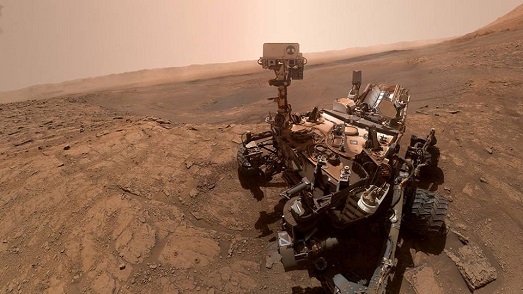Recently, working from home is the norm around the world. To maintain social distance, organisations requiring employees to work from home are the usual practice now. With no exception, NASA implements the measures to their mission teams, including the Curiosity Mars rover mission team.
The Curiosity Mars rover mission team is based in the Jet Propulsion Laboratory (JPL) in California, US. They are used to working with Curiosity that is so far from Earth, with an average distance of 225 million kilometres. However, how does the arrangement affect the work of the mission team and Curiosity?
Curiosity Mars rover was launched on 26 November 2011 and after 9 months landed successfully on Mars on 5 August 2012. Curiosity was set out to answer a question: Was there life on Mars? It continues to dig out the answer by exploring the rocks, soils and atmosphere and analysing the contained chemicals and minerals on Mars. It has been working for 2746 sol (sol is the short form of Mars solar day, the time for Mars to rotate once and equals 24 hours 39 minutes and 35.244 seconds, which equals around 1.0275 Earth day).
The mission team and Curiosity Mars rover communicate through sending and receiving radio signals and the mission team sends commands to the Curiosity to work. Since the transmission of the signal takes time as it needs to travel for such a long distance, the mission team programmes a sequence of actions for the rover and the sequence may involve 20 people developing and testing commands together at the laboratory. On 20 March 2020, it was the first time that nobody on the team was working at JPL as each of the team was working remotely from home. They brought with them communication tools such as headsets home as far as they could and kept intensive communicating with scientists and engineers by utilising multiple video conferencing and messaging apps online. The lack of high-performance computers and requiring extra effort in communication have made the tasks more challenging. However, the team still devised the commands and Curiosity executed without a hitch. According to the team, the tasks took just one or two more hours than it normally does. They were presented a problem and they figured out how to make things work. This is what NASA termed "can-do spirit".
No matter how difficult we all have been through, together we can embrace this "can-do spirit" to cope with those unique and uncertain situations and figure out solutions to work our way.
P.S.NASA targets to launch a new Mars rover, Perseverance, in July 2020, and Curiosity may stop its operation. Space Museum will give a review of this extraordinary exploration vehicle in the upcoming issue of the Newsletter. We will also have an exhibition to introduce Perseverance in July.




